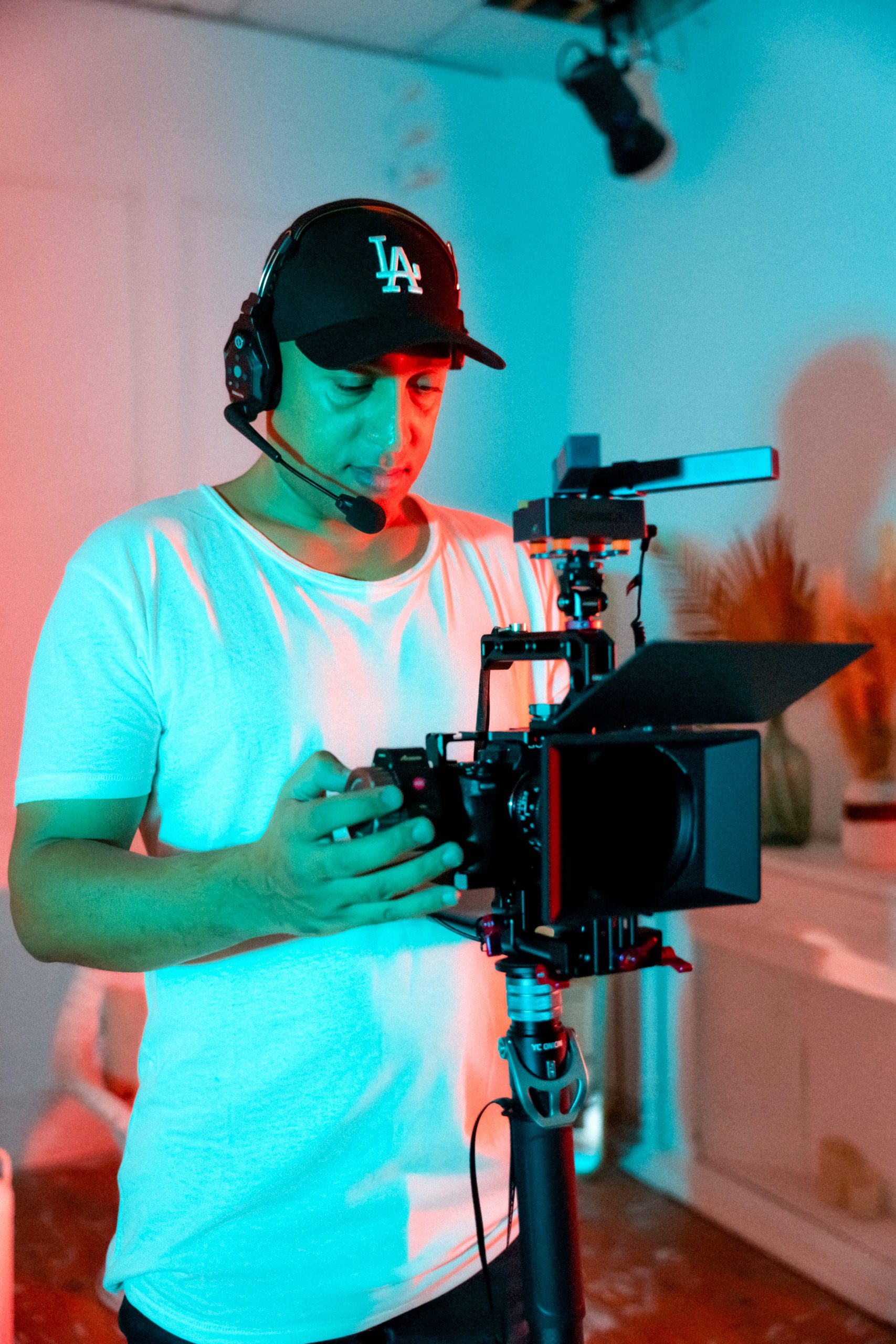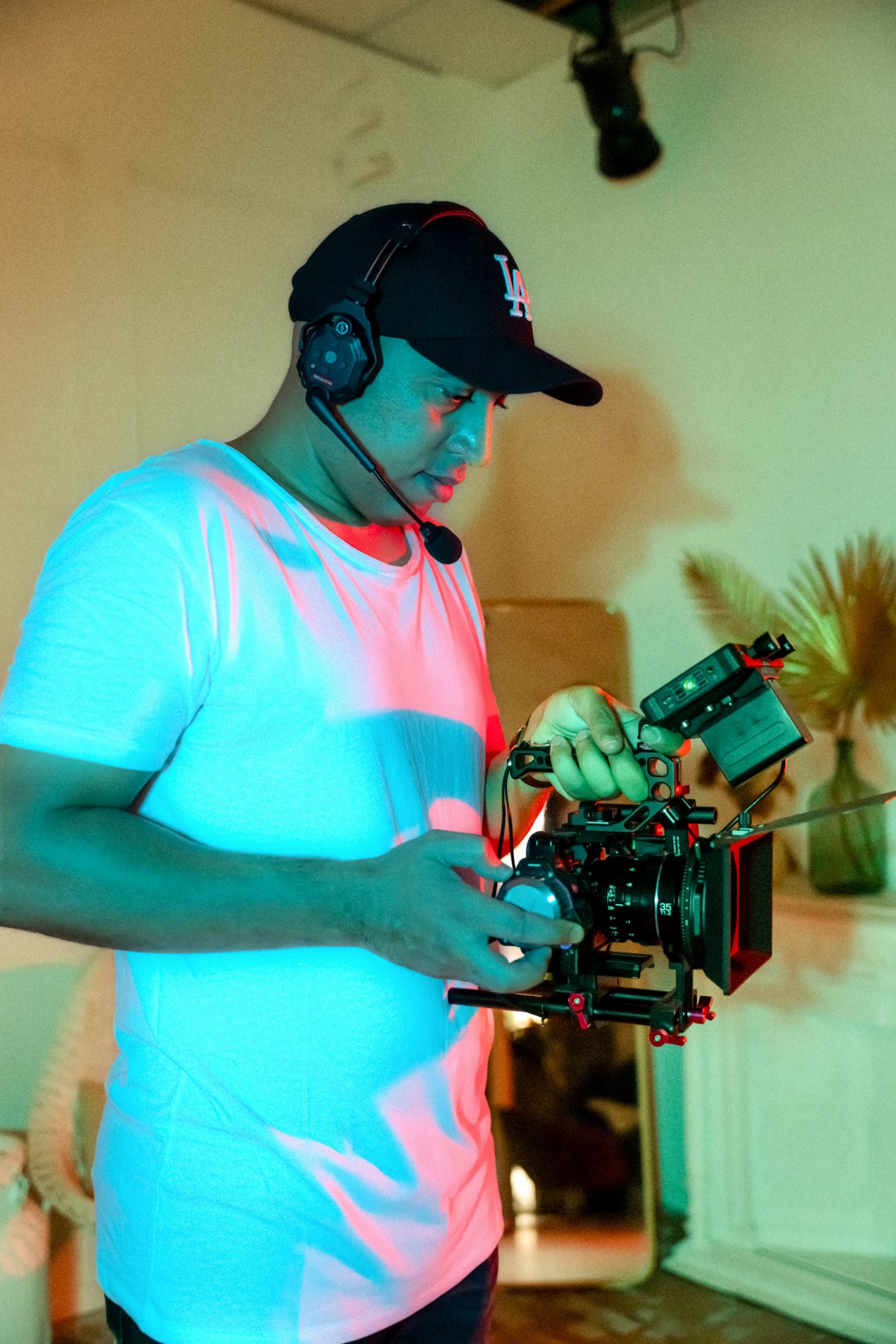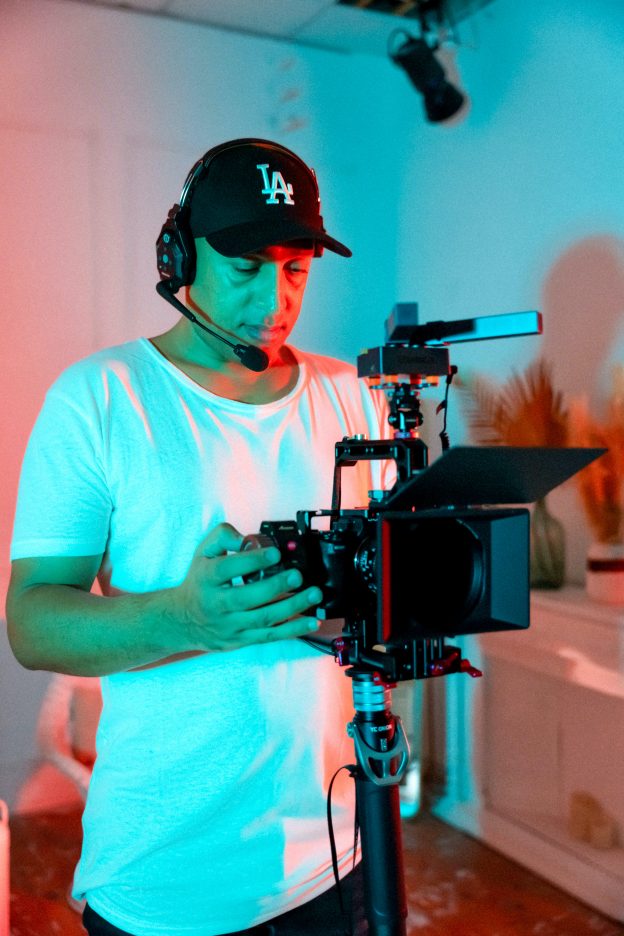As a design studio owner, it is crucial to understand the importance of HR compliance in order to maintain a legally compliant and productive workplace. HR compliance refers to adhering to laws and regulations that govern various aspects of the employer-employee relationship, such as hiring practices, employee benefits, workplace safety, and termination procedures. By ensuring HR compliance within your design studio, you can not only avoid legal issues and potential penalties, but also foster a positive work environment that attracts and retains top talent. In this article, we will discuss some key areas of HR compliance specifically tailored for design studios, and address frequently asked questions to provide you with a comprehensive understanding of this critical topic.

HR Compliance for Design Studios
Design studios are creative and dynamic work environments, where innovative ideas are brought to life. However, amidst the hustle and bustle of the creative process, it is crucial for design studios to prioritize HR compliance. HR compliance refers to the adherence to a set of laws, regulations, and policies that govern the management of employees within an organization.
Ensuring HR compliance is of utmost importance for design studios, as it helps protect the rights of employees, promotes a fair and inclusive workplace culture, and mitigates legal risks. This article will explore the significance of HR compliance for design studios, the benefits it brings, common compliance issues faced in this industry, and crucial legal considerations to keep in mind.
Understanding HR Compliance
HR compliance encompasses a wide range of areas, including but not limited to employment laws, non-discrimination and equal opportunity, employee relations and disputes, record-keeping and documentation, and conducting audits and inspections. By adhering to these regulations, design studios can create a conducive work environment that fosters productivity, professionalism, and mutual respect.
Importance of HR Compliance for Design Studios
Maintaining HR compliance is essential for design studios to protect both the rights of their employees and the reputation of the company. By complying with employment laws and regulations, design studios can ensure that their practices are legally sound, minimizing the risk of costly lawsuits, penalties, and damage to the company’s integrity. Furthermore, HR compliance promotes a positive work culture, attracting and retaining talented individuals who value fairness and equal opportunity.
Benefits of Ensuring HR Compliance
Prioritizing HR compliance yields several benefits for design studios. By establishing policies and procedures that align with legal requirements, design studios can foster a respectful and inclusive work environment. This, in turn, enhances employee morale, productivity, and teamwork. Moreover, maintaining compliance minimizes the risk of legal disputes, which can drain resources and distract from the core business activities of the design studio.
Common HR Compliance Issues in Design Studios
While each design studio is unique, there are some common HR compliance issues that tend to arise in this industry. One common issue is misclassification of employees, where independent contractors are mislabeled as employees or vice versa. This can lead to legal complications and result in substantial penalties. Another issue is the failure to provide proper accommodation to employees with disabilities, which violates anti-discrimination laws. Additionally, design studios may face challenges in managing employee relations, addressing workplace complaints, and ensuring fair compensation practices.
Legal Considerations in HR Compliance for Design Studios
Design studios must navigate a complex legal landscape to ensure compliance with employment laws. Understanding key employment laws is crucial, such as the Fair Labor Standards Act (FLSA), which governs minimum wage, overtime pay, and child labor regulations. Occupational Safety and Health Administration (OSHA) regulations also apply, ensuring workplace safety and health standards are met. Furthermore, design studios must comply with the Family and Medical Leave Act (FMLA), which provides eligible employees with unpaid leave for specific medical and family reasons. Equal Employment Opportunity (EEO) laws prohibit workplace discrimination based on factors such as race, gender, religion, and disability.
Developing HR Policies and Procedures
To ensure HR compliance, design studios should implement comprehensive policies and procedures. This section will highlight some crucial areas that design studios should focus on.
Creating an Employee Handbook
Design studios should develop an employee handbook that outlines the company’s policies, procedures, and expectations. This handbook should cover all key areas of HR compliance, including anti-discrimination, equal opportunity, leaves and absences, compensation, and confidentiality. It serves as a vital tool for educating employees on their rights and responsibilities, ensuring consistency in the application of policies.
Defining Job Descriptions and Expectations
Clear job descriptions and expectations are essential for both employees and employers. Design studios should establish detailed job descriptions that outline the duties, responsibilities, and qualifications for each position. By clearly defining expectations, design studios can set a foundation for effective performance evaluation, training, and development.
Establishing Performance Evaluation Processes
Performance evaluations provide an opportunity to assess employee performance, provide feedback, and identify areas for improvement. Design studios should establish a systematic and fair performance evaluation process, ensuring that all employees are evaluated consistently and objectively. This can help identify top performers, provide growth opportunities, and address any performance issues promptly.
Implementing Policies on Recruitment and Hiring
Recruitment and hiring processes should be conducted in a manner that ensures fairness, diversity, and compliance with anti-discrimination laws. Design studios should establish clear guidelines on job postings, candidate selection criteria, interview processes, and background checks. By implementing fair recruitment practices, design studios can attract a diverse talent pool and promote equal opportunity.
Establishing Policies for Leaves and Absences
Design studios should have clearly defined policies for leaves and absences, including vacation, sick leave, parental leave, and other types of leave mandated by law. These policies should comply with applicable employment laws and ensure that employees are aware of their entitlements and responsibilities. Proper documentation and approval processes should be in place to manage leave requests effectively.
Ensuring Compliance with Wage and Hour Laws
Design studios must comply with wage and hour laws to avoid legal disputes and expensive penalties. This includes ensuring proper classification of employees as exempt or non-exempt, accurately calculating and paying overtime, and complying with minimum wage requirements. Design studios should also establish policies on timekeeping, meal and rest breaks, and record-keeping to facilitate wage and hour compliance.
Maintaining Confidentiality and Data Protection
Design studios handle sensitive client information, creative designs, and other confidential data. It is crucial to establish policies and procedures to protect this valuable information from unauthorized access or disclosure. Additionally, design studios should comply with relevant data protection laws, such as the General Data Protection Regulation (GDPR), to safeguard employee and client data.
As design studios develop their HR policies and procedures, it is advisable to seek legal counsel to ensure compliance with applicable laws and regulations.
Ensuring Non-Discrimination and Equal Opportunity
Design studios should promote a diverse and inclusive work environment by ensuring non-discrimination and equal opportunity for all employees. This section explores the key considerations in achieving this goal.
Understanding Anti-Discrimination Laws
Design studios must understand and comply with federal and state anti-discrimination laws, such as Title VII of the Civil Rights Act of 1964, the Age Discrimination in Employment Act (ADEA), and the Americans with Disabilities Act (ADA). These laws prohibit discrimination based on protected characteristics such as race, color, religion, sex, national origin, age, and disability. Design studios should develop policies and practices that align with these laws and strive to create a workplace free from discrimination.
Preventing Discrimination in Recruitment and Hiring
Design studios should implement processes and practices that ensure fair and unbiased recruitment and hiring. This includes using objective criteria for candidate selection, conducting interviews in a standardized manner, and documenting the rationale for hiring decisions. Design studios should also train hiring managers to recognize and eliminate biases that may influence their decision-making.
Creating a Diverse and Inclusive Workplace
Design studios should actively embrace diversity and create an inclusive work environment where employees feel valued and respected. This can be achieved by promoting diversity in recruitment efforts, fostering a culture of inclusion, and providing diversity and sensitivity training to employees. By embracing different perspectives and experiences, design studios can foster creativity and innovation.
Promoting Equal Opportunity and Fair Treatment
Design studios must promote equal opportunity and fair treatment for all employees. This includes ensuring that employees have access to training and development opportunities, promotions are based on merit, and performance evaluations are conducted objectively. Additionally, design studios should have policies and procedures in place to address harassment, bullying, and other forms of discriminatory behavior promptly.
Accommodating Disabilities and Reasonable Adjustments
Design studios have a legal obligation to make reasonable accommodations for employees with disabilities. Design studios should engage in a timely and interactive process to determine appropriate accommodations based on individual needs. This may include providing assistive technology, modifying workstations, or adjusting work schedules. By accommodating disabilities, design studios can create an inclusive and accessible workplace for all employees.
Managing Employee Relations and Disputes
Effective management of employee relations and prompt resolution of disputes are vital for maintaining a harmonious work environment. This section highlights important considerations in this area.
Establishing Effective Communication Channels
Design studios should establish effective communication channels that facilitate open and transparent communication between employees and management. This can be achieved through regular team meetings, performance feedback sessions, suggestion boxes, and anonymous reporting mechanisms for workplace concerns. Encouraging open communication fosters trust and allows for prompt resolution of issues.
Handling Grievances and Workplace Complaints
Design studios should have procedures in place for employees to raise grievances or lodge complaints about workplace issues. This may include conflicts with colleagues, unfair treatment, harassment, or other concerns. Design studios should ensure that these procedures are well-documented, accessible to all employees, and provide for a fair and impartial investigation process. Promptly addressing grievances and complaints demonstrates a commitment to maintaining a healthy work environment.
Addressing Harassment and Bullying
Harassment and bullying have no place in the workplace. Design studios must establish a zero-tolerance policy for such behavior and educate employees about what constitutes harassment and how to report it. Design studios should promptly investigate any allegations of harassment or bullying and take appropriate disciplinary action if necessary. Creating a safe and respectful workplace minimizes legal risks and fosters employee satisfaction.
Managing Employee Benefits and Compensation
Design studios should establish comprehensive employee benefits packages that comply with applicable laws and regulations. This includes providing health insurance, retirement plans, paid leave, and other benefits. Design studios should also ensure that compensation practices are fair, transparent, and aligned with industry standards. Regularly reviewing and updating benefit plans and compensation practices helps attract and retain talented employees.
Dealing with Employee Terminations and Layoffs
Design studios may need to terminate employees or implement layoffs due to business needs. It is crucial to handle such situations with sensitivity and fairness, ensuring compliance with employment laws and contractual obligations. Design studios should establish procedures for conducting terminations or layoffs, including notice requirements, severance packages, and communication plans to support affected employees during challenging times.

Complying with Employment Laws
Compliance with employment laws is a fundamental aspect of HR management in design studios. This section provides an overview of key employment laws that design studios should understand.
Understanding Key Employment Laws
Design studios must familiarize themselves with federal, state, and local employment laws that apply to their operations. This includes laws such as the Civil Rights Act, the Equal Pay Act, the Occupational Safety and Health Act, the FMLA, the ADA, and the Age Discrimination in Employment Act. Staying up to date with these laws ensures compliance and protects the rights of employees.
Compliance with the Fair Labor Standards Act (FLSA)
The FLSA sets standards for minimum wage, overtime pay, record-keeping, and child labor. Design studios must classify employees correctly as exempt or non-exempt, based on job duties and salary level, to determine eligibility for overtime pay. Compliance with the FLSA is crucial to avoid costly wage and hour violations.
Adhering to Occupational Safety and Health Administration (OSHA) Regulations
Design studios must comply with OSHA regulations to maintain a safe and healthy work environment. OSHA sets standards for workplace safety, including hazard communication, personal protective equipment, emergency action plans, and record-keeping requirements. Design studios should regularly assess their workplace for potential safety hazards and implement measures to mitigate risks.
Ensuring Compliance with Family and Medical Leave Act (FMLA)
The FMLA provides eligible employees with up to 12 weeks of unpaid, job-protected leave for specific medical and family reasons. Design studios must adhere to FMLA requirements, including providing proper notice to employees, maintaining accurate records, and ensuring that employees are reinstated to their original or equivalent positions upon return from leave.
Complying with Equal Employment Opportunity (EEO) Laws
Equal Employment Opportunity laws prohibit workplace discrimination based on race, color, religion, sex, national origin, age, disability, and genetic information. Design studios should develop policies and practices that align with EEO laws, ensure fair treatment of employees, and provide accessible avenues for reporting discrimination.
Maintaining Records and Documentation
Proper record-keeping and documentation are crucial for HR compliance in design studios. This section covers key considerations in this area.
Importance of Documentation in HR Compliance
Documentation plays a pivotal role in HR compliance, serving as evidence of compliance efforts and actions. Design studios should maintain accurate and up-to-date records to demonstrate adherence to employment laws, respond to regulatory inquiries, and support decision-making processes. Proper documentation also aids in preserving important information, such as performance evaluations, employee complaints, and training records.
Keeping Personnel Files and Records
Design studios should establish a systematic approach to keeping personnel files for each employee. These files should include relevant employment documents, such as job applications, offer letters, performance evaluations, disciplinary records, and any other documentation related to the employment relationship. Personnel files should be stored securely and in compliance with data protection laws.
Maintaining Records of Training and Development
Design studios should maintain records of employee training and development programs. This includes documenting training topics, attendees, dates, and any certifications or qualifications obtained. These records demonstrate the studio’s commitment to employee growth and professional development, which can aid in attracting and retaining talented individuals.
Retaining Payroll Records and Timekeeping Documentation
Design studios must retain payroll records to comply with wage and hour laws. This includes records of hours worked, wages paid, deductions, and any other relevant payroll information. Timekeeping documentation, such as timesheets or timecards, should also be retained. Design studios should adhere to specific record retention requirements mandated by applicable laws and regulations.
Handling Confidential Information and Data Security
Design studios often handle sensitive client information and employee data. It is imperative to establish policies and procedures to protect this confidential information from unauthorized access or disclosure. Design studios should implement physical and technological safeguards, such as secure file storage, access controls, and encryption, to ensure data security and compliance with applicable privacy laws.
Educating Employees on HR Policies
Design studios should educate their employees on HR policies and procedures to promote understanding and compliance. This section explores effective strategies for employee education.
Conducting Regular Training and Workshops
Regular training sessions and workshops provide employees with the knowledge and skills necessary to navigate HR policies effectively. Design studios should conduct training on key HR compliance topics, such as anti-discrimination, workplace harassment prevention, and data protection. Training sessions can be conducted in-person or online, and should be tailored to the specific needs of the design studio.
Ensuring Awareness of HR Policies and Procedures
Design studios should ensure that employees are aware of HR policies and procedures by clearly communicating them and making them easily accessible. This can be achieved through various mediums, such as the employee handbook, email communications, internal intranet portals, and posters in common areas. Regular reminders and updates should be provided to reinforce awareness.
Promoting Ethical Conduct and Professionalism
Ethical conduct and professionalism are essential aspects of HR compliance. Design studios should develop a code of conduct that outlines expected ethical behaviors and professional standards. This code of conduct should be communicated to all employees and serve as a guide for their actions and interactions within the organization.
Providing Resources for Employees to Seek Guidance
Design studios should establish channels for employees to seek guidance, address concerns or obtain clarification on HR policies. This may include designated HR representatives, hotlines, or anonymous reporting systems. By providing accessible resources, design studios encourage employees to seek assistance when needed, fostering a culture of open communication and compliance.
Encouraging Reporting of Compliance Concerns
Design studios should create an environment where employees feel comfortable reporting compliance concerns without fear of retaliation. Design studios should establish clear procedures for reporting concerns, investigate reports promptly and thoroughly, and take appropriate remedial actions if violations are found. Encouraging reporting helps identify potential issues early and enables timely resolution.
Preparing for Audits and Inspections
Audits and inspections are an integral part of HR compliance management for design studios. This section discusses important considerations when preparing for such events.
Understanding the Importance of Audits and Inspections
Audits and inspections assess an organization’s compliance with HR laws and regulations. They provide an opportunity for design studios to identify and rectify areas of non-compliance before they escalate into legal disputes or penalties. Successful preparation for audits and inspections ensures that design studios are equipped to present the necessary documentation and demonstrate their commitment to HR compliance.
Preparing Documentation for Regulatory Audits
Design studios should maintain records and documentation in an organized manner to facilitate regulatory audits. This includes having easy access to employee personnel files, training records, payroll documentation, and any other documents relevant to specific regulatory requirements. Dedicating time to regularly review and update documentation ensures that records are up to date and ready for audit purposes.
Conducting Internal HR Compliance Audits
Design studios should conduct internal HR compliance audits on a regular basis to proactively identify areas that require improvement. Internal audits assess compliance with HR policies, legal requirements, and industry best practices. They help design studios identify gaps, rectify non-compliance, and establish corrective measures to prevent future issues.
Responding to Government Agency Inspections
In the event of a government agency inspection, design studios should be prepared to cooperate and provide the necessary information to the inspectors. It is important to respond promptly, maintain open communication, and follow any specific instructions provided by the agency. Design studios should have designated individuals responsible for handling such inspections and ensure they are knowledgeable about HR compliance requirements.
Implementing Corrective Measures and Remediation
Following audits or inspections, design studios should implement corrective measures and remediation plans to address any identified non-compliance issues. This may involve updating policies, conducting additional training, or revising procedures to align with legal requirements. Design studios should regularly monitor the effectiveness of corrective measures and make adjustments as needed.

Outsourcing HR Compliance Services
Outsourcing HR compliance services can be a strategic decision for design studios. This section explores the benefits of outsourcing and considerations for selecting service providers.
Benefits of Outsourcing HR Compliance
Outsourcing HR compliance services offers design studios several advantages. It allows them to leverage the expertise of professionals who specialize in HR compliance, ensuring accurate and up-to-date knowledge of applicable laws and regulations. Outsourcing also saves time and resources, as design studios can focus on their core business activities while leaving compliance management to experts.
Choosing an HR Compliance Service Provider
When selecting an HR compliance service provider, design studios should consider factors such as experience, reputation, and industry expertise. The service provider should have a thorough understanding of the unique challenges and requirements of design studios. It is advisable to request references and client testimonials to assess the provider’s track record and client satisfaction.
Understanding Service Agreements and Contracts
Design studios should carefully review service agreements and contracts before engaging HR compliance service providers. The agreements should clearly outline the scope of services, responsibilities of both parties, service fees, and termination provisions. It is essential to ensure that the terms of the agreement align with the design studio’s specific needs and comply with applicable laws.
Collaborating with Legal Professionals for Compliance Support
Design studios may benefit from collaborating with legal professionals who specialize in employment law. These professionals can provide guidance, review HR policies and procedures, ensure compliance with applicable laws, and represent the design studio in legal matters if necessary. Engaging legal professionals ensures that design studios are proactively managing HR compliance and mitigating legal risks effectively.
Monitoring and Evaluating HR Compliance Services
Design studios should establish mechanisms to monitor and evaluate the effectiveness of HR compliance services provided by outsourced providers. This may include conducting regular performance reviews, seeking feedback from employees, and assessing whether the provider is meeting the agreed-upon service level expectations. Continuous monitoring ensures that design studios are receiving value from their outsourcing arrangements.
FAQs about HR Compliance for Design Studios
What is HR compliance?
HR compliance refers to the adherence to a set of laws, regulations, and policies that govern the management of employees within an organization. It encompasses areas such as employment laws, non-discrimination and equal opportunity, employee relations, record-keeping, and audits.
Why is HR compliance important for design studios?
HR compliance is essential for design studios to protect the rights of employees, promote a fair and inclusive work environment, and mitigate legal risks. It helps attract and retain talented employees, fosters productivity and teamwork, and ensures compliance with employment laws and regulations.
What are some common HR compliance issues in design studios?
Common HR compliance issues in design studios include misclassification of employees, failure to provide accommodations for disabilities, managing employee relations and workplace complaints, complying with wage and hour laws, and handling employee terminations and layoffs.
How can design studios ensure non-discrimination and equal opportunity?
Design studios can ensure non-discrimination and equal opportunity by understanding and complying with anti-discrimination laws, implementing fair recruitment and hiring practices, creating a diverse and inclusive workplace culture, promoting equal opportunity and fair treatment, and accommodating disabilities through reasonable adjustments.
What legal considerations should design studios keep in mind for HR compliance?
Design studios should familiarize themselves with key employment laws, such as the Fair Labor Standards Act, the Occupational Safety and Health Act, the Family and Medical Leave Act, and equal employment opportunity laws. Compliance with these laws ensures fair treatment of employees, enables safe and healthy work environments, and mitigates legal risks.
